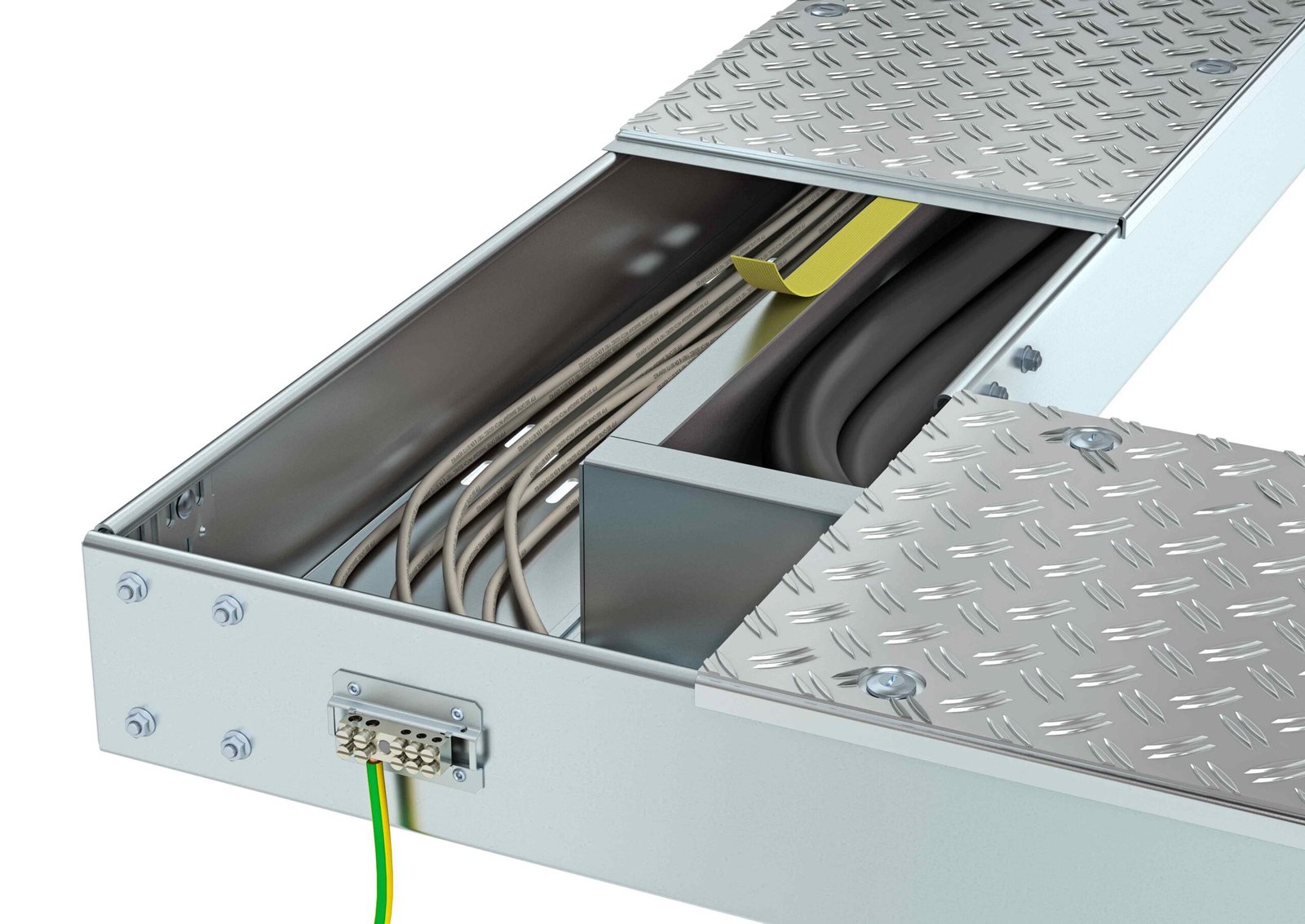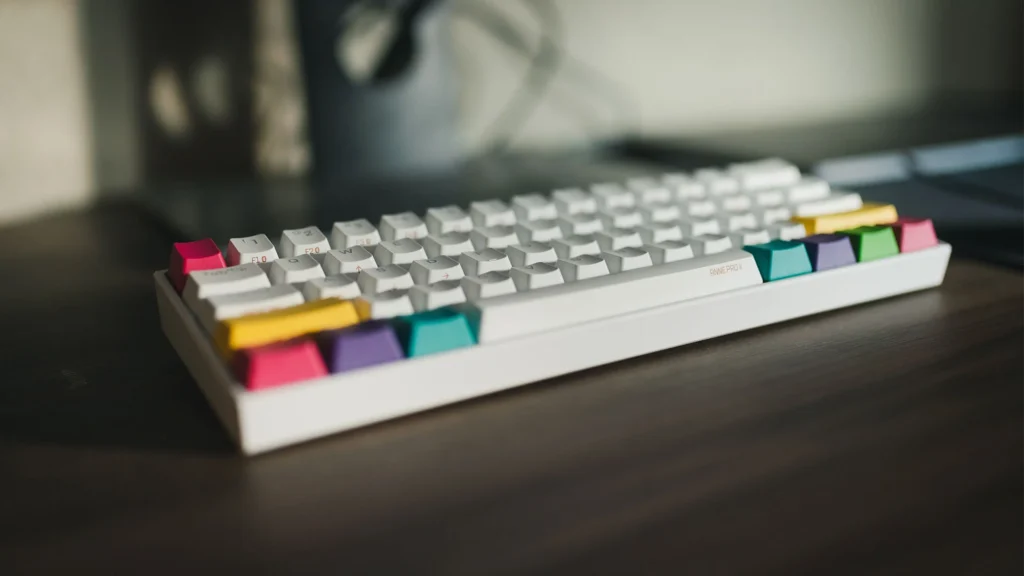In the production of electrical work, a cable tray is necessary for laying the main power supply line with a large load over long distances.
They protect cables from external damage, preserve the aesthetics of the room, and hide cables that are not suitable for the interior of the room.
The inner surface of the gutter is treated to avoid damage to the cable when laying. In such trays, one or more cables can be laid.
Types of a Cable Tray:
Trays are divided into several types according to the material of manufacture:
- Metal.
- Plastic
- Galvanized
- Reinforced Concrete
- Concrete
Metal Cable Trays
Such trays are made of low carbon or stainless steel, as well as galvanized iron.
The most popular are galvanized steel trays, as it has the best performance properties and corrosion resistance, in comparison with ferrous metal. Their cost is lower than stainless steel trays.
Galvanized Iron Cable Trays
In turn, galvanized trays are divided into:
- Ladders
- Non-perforated Trays with lid
- Perforated Trays
- Wire Trays
Strair
The ladder type of trays is used subject to the installation of supports for open laying of electrical wiring operating under voltage up to 1 kV.
Trays are made of galvanized steel 1.2 mm thick. For ease of installation, cross bars and other additional elements are used.
The trays allow both power and low-power cables to be laid. Cables in trays are easily accessible for repair and maintenance.
Non-perforated Trays with Lid
Such trays are designed for installation of power and low-power wires in the form of fire, security or information wires in any premises. The trays consist of a lid and a base.
During installation, the base is rigidly fixed to the surface, wires and cables are laid in the trays, and the cover is closed from above.
Such trays make it possible to create an electrical network, while retaining all the advantages of an external network: mobility, ease of installation, low cost, shape change, high security, preservation of the appearance of the room.
Perforated Trays
Such trays are made of galvanized metal with a perforated base. It is also called a cable box or a metal cable channel.
The perforated tray can be mounted with or without a cover, which increases the protection of the wiring and expands the scope of this design.
The perforated version is optimal for cables up to 1000 volts.
The main design feature is lateral perforation in the form of holes along the entire length of the tray.
This makes cable installation easier. Through the holes it is convenient to fix the cables in the tray. Perforation prevents overheating of the cable.
Another feature is the stamped edges, which help to quickly overlap the structure.
There is grounding on the tray cover, which creates safety for humans.
There are three types of perforated trays according to the material of manufacture from:
- Of Stainless Steel
- Galvanized Metal
- Hot dip galvanized Metal
Wire Trays
Wire cable trays are made from galvanized steel wire and are used for the installation of open cable lines in industrial facilities and residential buildings.
Power cables may be laid together with low power wires. Wire models of trays are allowed to be mounted in closed and open spaces.
Plastic Cable Trays
In residential premises, offices, a cable tray, made of PVC plastic are most often used. They can be used for laying cables up to 400 volts, as well as indoor telecommunications wires for open wiring.
Plastic channels for cables consist of a plastic trough with a lid that closes with a latch. The tray chute is either hollow or with removable dividers.
Plastic trays for cables are divided into types, depending on the level of placement:
- Simple. Serve for wiring networks, saving them from damage.
- Parapet. They are installed at the working level (at the desktop level). The inside of the tray may have separators to isolate wires of different functions. In this case, it is possible to mount the socket directly on the plastic tray.
- Plinth. Are intended for installation of cables on the bottom of the room.
- Floor. Serve to protect cables laid on the floor.
- Cornice.Their installation is made at the top under the ceiling.
Reinforced Concrete
Such trays are used for underground and surface installation. They have become very popular, as electrical networks need protection from the harmful effects of the soil. Soil has no effect on reinforced concrete products.
Through reinforced concrete trays, you can easily control the condition of cables, wires, and also change them by lifting the floor slabs. Their main advantage is the reliable protection of cables.
This design is made of steel crates and heavy concrete. To prevent dirt from entering the cavity of the tray, floor slabs are used, which close the tray from above as a cover. Slabs are also made of concrete.
Concrete
Concrete cable trays are used for laying power lines and power cables, as well as various communications.
They protect the network line from the harmful effects of the external environment.
Concrete channels are made from heavy types of concrete, without the use of metal fittings.
This special material has high strength and retains its qualities at any temperature, and does not let water through.
Benefits of Using a Cable Tray
Unlike other load-bearing system designs, cable trays have several benefits that installers and utility designers love about them.
Security
Firstly, it is the safety of cables and wires: they are protected from mechanical stress, sunlight, precipitation and outside interference. Most trays have a round edge that does not harm the insulation during installation.
At explosive enterprises, solid boxes are more often used. In this design, the cables are completely insulated – even if a fire occurs, the walls will not allow the flame to break out for a long time.
Secondly, it is protection from outside interference. Installation is carried out at a height of at least two meters, which means that the contents of the cable route are reliably protected, those present in the room do not come into contact with the route.
Ease of installation
An indisputable fact is that cable trays are easy and quick to mount, laying conductors in them is even easier. Adjustment to length is carried out by simple trimming.
Especially when it comes to perforated or wire trays, which already have all the necessary holes.
Mounted Cable Tray
Wire ones also prevent the contents from overheating, due to the use of natural ventilation and an open design – dust does not accumulate on them.
Manufacturers offer a lot of fastener options for installing such systems, they weigh little and are easy to care for.
Many manufacturers offer male-female systems that require no additional fasteners and save time and money.
Corrosion Resistance
Trays and boxes are made of stainless or galvanized steel. It is resistant to mechanical stress, aggressive environments, temperature changes and precipitation.
Aesthetic Appearance
There is no need to talk about special beauty here, but a neat cable route is in every way preferable to randomly stretched wires and corrugated pipes.
Although some designers successfully fit systems into interiors, making them a concise and stylish design element.
Versatility
Cable trays are used for mounting various types of conductors in any premises. A huge number of accessories allows you to create a system of any configuration, with any branches.
Properly filled traces are easy to scale. during the initial installation, they are filled by no more than half – to lay additional networks, you just need to lay cables or wires in an already installed route. sprunki horror Endless Fun Awaits!



